Tomato Bagheera F1: recommendations for growing and reviews of the variety
The Bagheera hybrid tomato is intended for early marketing. It is appreciated for its high yield and pleasant fruit taste.
Content:
- Description, benefits and reviews
- Growing seedlings
- Planting seedlings in the ground
- Caring for Bagheera Tomatoes
- Diseases and pests of the variety
Description, benefits and reviews
The Bagheera F1 hybrid belongs to the early varieties. The first fruits ripen 65 days after planting. The shape of the fruit is round, with a barely noticeable spout, the surface is smooth. The color is red, intense, uniform outside and inside the fruit. There is no green spot near the stalk. User reviews claim that the tomatoes inside are fleshy, juicy, multi-chamber, tasty. Fruits do not ripen at the same time, fruiting is stretched.
The weight of one tomato is approximately 200 g.
Hybrid determinant... The bush is powerful, up to 1 m high, with a lot of shoots and leaves. The variety bears fruit equally well in different climatic conditions, is not afraid of temperature drops in the spring. Productivity using drip irrigation and good care reaches 100 tons per hectare.
The Bagheera F1 hybrid has good keeping quality. The gardeners who were engaged in the cultivation of the Bagheera tomato claim that its fruits are well stored and can lie for up to a month without losing marketability. The dense consistency of the tomato makes it possible to transport it over long distances. Can be used in salads, salt, canned for the winter. Smaller fruits are processed into tomato.
Growing seedlings
Bagheera F1 hybrid tomatoes are not grown from garden seeds. Hybrids do not transfer maternal properties through seeds. Therefore, they must be purchased from reliable suppliers. Usually the manufacturer carries out pre-sowing treatment.
Features of planting seeds:
- Seeds are sown in late February (southern regions), mid-March in central ones. It should be about 60 days before planting in the ground.
- The soil taken in the garden or in the garden is disinfected before planting by calcining in the oven or microwave. Moistened, kept in a warm room for 10 days to restore the beneficial microflora.
- The dishes are filled with soil, grooves 1 cm deep are dug on the surface at a distance of 4 cm from each other.
- The seeds are laid out. Fall asleep with soil, watered.
- Cover with glass and set in a warm place.
The temperature during germination should be around 25 ° C. After friendly shoots appear, it is lowered to 15 ° C, and at night it is reduced to 10 ° C. Withstand a decrease for about a week. This is necessary in order for the sprout to switch to nutrition from the soil. Reviews of gardeners claim that the percentage of tomato germination is high (96%). Then the temperature is raised to 18 ° C, the seedlings are set in a sunny place. They begin to temper as early as possible, accustoming them to the wind, the sun's rays. For the period of planting, she should spend the night in the fresh air.
Water the seedlings without falling on the leaves. Do not overmoisten the soil so that the plants do not get sick with a black leg. She can destroy almost all seedlings in a few days. When the first signs of the disease are detected (drooping seedlings fall on moist soil, their bases darken), they stop watering until the soil dries up and treat with antifungal agents (Fitosporin).
After 3 weeks, they begin to feed organic or mineral fertilizers in low doses.
Dive tomatoes can be done once or repeated as they grow. This procedure promotes the formation of a powerful root system. It is advisable to dive the seedlings into separate pots or glasses with a volume of 1 liter.
Planting seedlings in the ground
Growing soil tomato cooked in the fall. This is the area where they grew carrot, onion, cucumbers... The soil on which nightshades were grown last year is not suitable for growing tomatoes: potatoes, eggplant, pepper... After harvesting, the soil is slightly loosened. This causes germination of weed seeds that have entered the soil. 2 weeks after loosening, organic and mineral fertilizers are applied and deep plowing of the soil is carried out.
Sprouted weeds die. In the spring, the site is cultivated and leveled. By the time the seedlings are planted, it will again be covered with weed shoots. Therefore, before planting seedlings, they must be removed by loosening the soil to a depth of 5 cm. Soil acidity should be in the range of 6.0-7.0. If it is higher, the site is deoxidized by the introduction of dolomite flour or slaked lime, with a lower one - sulfur. Tomatoes of a determinate type are planted at a distance of 50 cm from each other. If the area of the site allows, increase it to 70 cm. One plant needs to allocate 0.3 m2 of area. The depth of the hole is 30 cm.
Seedlings are planted:
- In rows (tape-nesting method). The holes are dug at a distance of 60 cm from the irrigation furrows. The distance between furrows is 1.4 m.
- Square-nesting method with a distance of 70 cm between bushes.
- In the northern regions, tomatoes are grown on ridges 15 cm high and 120 cm wide. Bushes are planted in rows along the edges of the ridge.
Seedlings are planted in the morning, in the morning, or in the late afternoon. An hour before, the tomatoes are watered to easily remove them from the pots when planting. Dig holes with a depth of 15 cm. Take out the seedlings from the dishes, set them in the holes, poured with water. Half a liter is added to one bush. They are immersed in liquid earth, sprinkled with earth, and compacted. Cover the top with a layer of mulch up to 10 cm high.Use straw, grass cuttings or wet sawdust.
Do not water for a week. In the future, they look at the condition of the soil. Be sure to water during flowering, formation and growth of fruits. Lack of moisture can lead to curling leaves, drooping ovaries and an increased tendency to disease. During the ripening period, the fruits crack without moisture.
Caring for Bagheera Tomatoes
Bagheera tomatoes are undemanding to care for. Although tying is not necessary for determinant varieties, it is best to do this. Then the fruits will not fall on the ground and be damaged by diseases or pests. Gardeners are advised to grow a bush of 3-4 stems.
All season they loosen the soil between the plants and in the aisles. Weeds not only protect tomatoes from sunlight, but also contribute to the spread of fungal and viral diseases. They monitor the shape of the bush and the number of fruiting shoots. They pick off extra stepchildren before flowers appear on them.
The amount of fertilizer depends on the acidity and composition of the soil.
The main chemical element for tomato is calcium. With its lack, the fruits begin to rot. Therefore, calcium nitrate or calcinite is added. The Bagheera tomato needs the addition of potassium, phosphorus and magnesium. Its growth is positively influenced by nitrogen. But the plant needs it in the spring, before the beginning of fruiting. Fertilizer is applied only in liquid form.
Diseases and pests of the variety
The Bagheera tomato hybrid is resistant to most fungal diseases, especially fusarium wilt. This is indicated by gardeners who have experience in growing the variety. But at high humidity, they can be amazed:
- Late blight is the most famous and common fungal disease of tomatoes. It manifests itself in moist air of thickening of the planting. Gray-brown spots appear on leaves, stems and fruits. At high humidity, they become covered with a white bloom. To combat the disease, the bushes are sprayed with preparations containing copper, Fitosporin, Skor. Tear off the leaves under the fruit set.
- With Alternaria (dry spotting), brown spots appear on the lower part of the leaf, which increase and move to other parts of the plant. The surface of the spot is depressed.Treat with Tattu, Antracol.
- Cladosporium has a popular name "brown spot". First, gray spots appear under the leaves. They grow, turn brown, quickly move to other parts of the plant. It can die.
- Vertex rot most often affects green fruits lying on the ground. A dark spot of soft consistency appears at the top. It turns brown and hardens, the fruit ripens quickly.
- Streak covers all parts of the plant with yellow-brown stripes (strokes). This viral disease leads to twisting of leaves, dropping of buds, ovaries. New leaves grow twisted, curly. The bush is oppressed and dries up. The fruits become tough and tasteless, cracking.
It is advisable to pull out diseased bushes and burn them. For prevention, some gardeners advise watering tomatoes with salt water. But this will negatively affect the condition of the soil in the future. The aboveground parts of tomatoes are very fond of the Colorado potato beetle. To protect them from pests, they are soaked for a long time in Aktara's solution at the rate of 1 sachet per 2 liters of water. The root system is immersed, insisted for 2 hours, then planted in the ground. This treatment will be sufficient for several months. Then you can process Fitoverm, taking into account the timing of the harvest.
More information can be found in the video:
Tomato pests:
- The roots of tomatoes can nibble bear - large insects about 5 cm long. They dig tunnels and lay eggs in the ground. In order for them to warm up, females free the territory above the nest, destroying the plants. You can get rid of the pest by laying out a special bait before plowing the site. Adults can be lured out by flooding the passages with water. They look for nests and eliminate bear eggs.
- Whitefly is an insect with two pairs of white wings. They cause the formation of yellow spots on the leaves. The larvae cover the leaves and stems with secretions, on which sooty fungi settle. Tomato stalks turn black. You can fight the pest before the fruits ripen with Confidor, during the ripening period with Fitoverm.
Tomato Bagheera F1 is a fruitful variety suitable for transportation and storage for a long time at home. Its cultivation allows you to extend the period of consumption of fresh tomatoes.



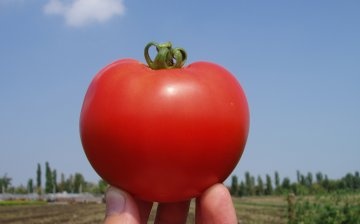
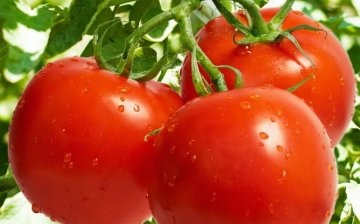
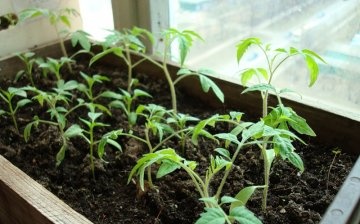
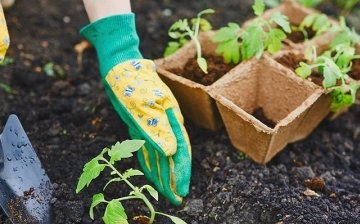
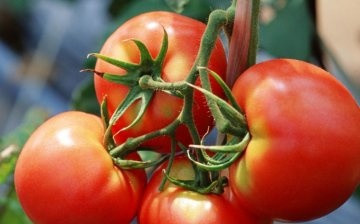







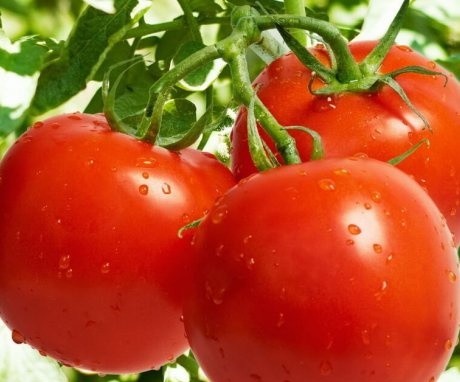

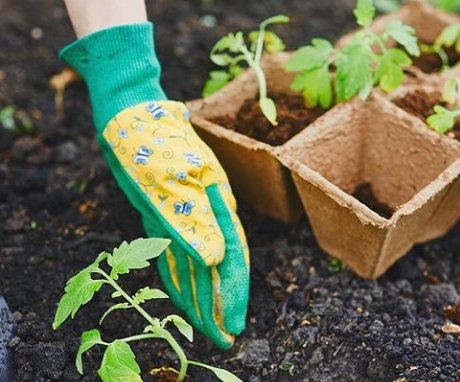
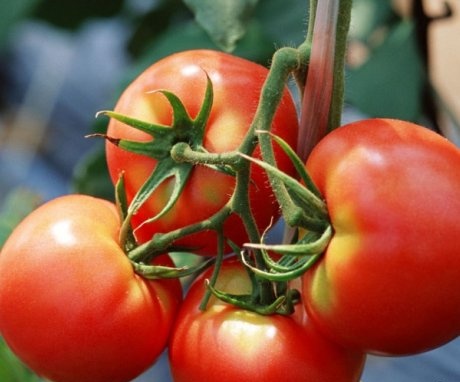
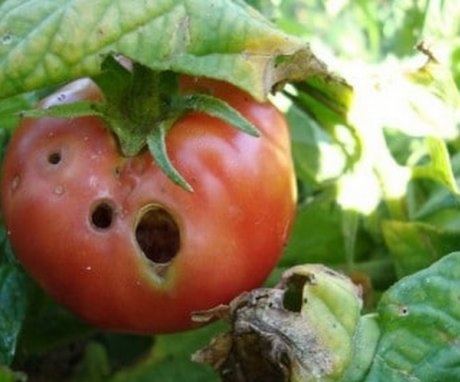
We do not quite grow this tomato, as indicated in the article. We do not make the distance between the bushes more than half a meter, but we must tie all the bushes to the posts. We leave no more than two stepsons and the tomatoes grow into three stems, if there are more of them, then the bush is very thickened and there will be few fruits on it.